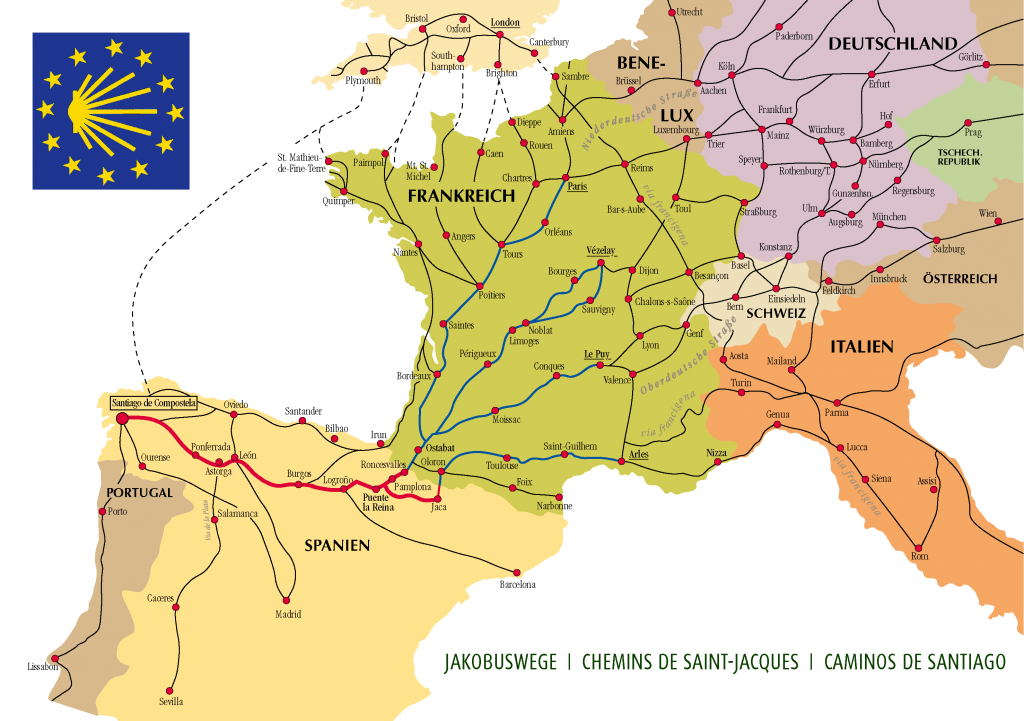Welcome to you, the pilgrim to be, the pilgrim on the way, and the pilgrim that has already been on a journey of a lifetime!
Here you’ll fine all the info you’ll need for your Camino. The routes, the towns, the accommodations.
Practical information. What to carry? When to go? How to take care of yourself? We’ve also included some Frequently Asked Questions. Hopefully they include yours too.

Camino Ways
Camino Portugués
The Camino Portugués (Caminho Português in Portuguese) is the route from Portugal to Santiago de…
Camino de Muxía
The Camino de Muxía is sort of an alternative epilogue to the Camino. It starts…
Camino de Fisterra
The Camino de Fisterra is, to many, the natural continuation and epilogue to the Camino…
Camino Primitivo
The Camino Primitivo is the oldest of all the Caminos. It starts in Oviedo, and…
Via Francigena
The Via Francigena follows the footsteps of Sigeric the Serious, Archbishop of Canterbury, who walked…
Camino Portugués Interior
The Caminho Português Interior (Caminho Português Interior in Portuguese) starts from Farminhão, near Viseu, and…
Camino Francés
The Camino Francés, the ‘classical’ Camino route runs from Saint-Jean-Pied-de-Port in France through Pamplona, Burgos,…
FAQ and Info
The compostela
In order to certify the completion of the pilgrimage, pilgrims have to obtain the compostela….
FAQ
Here are some Frequently Asked Questions. Hopefully they include yours too. About the Camino Isn’t…
The credencial
The credencial is the pilgrims’ ‘passport’ on the Way, a 14-page, accordion-pleated document, obtainable in…